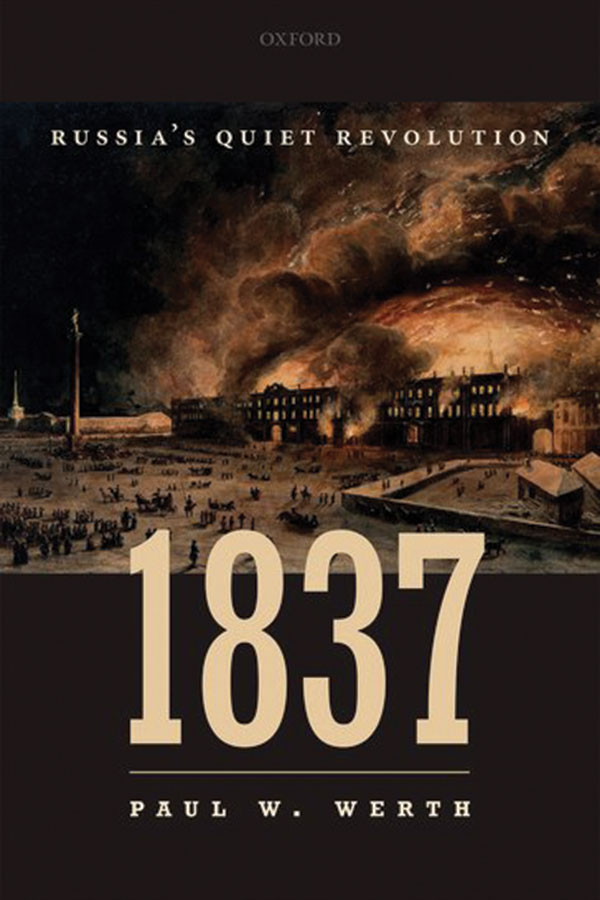

Paul W. Werth ’90, a history professor at the University of Nevada, Las Vegas, is the author of the newly released 1837: Russia’s Quiet Revolution, published by Oxford University Press. By coincidence of course, that is the same year as the founding of Knox College. Werth refers to Knox in the book’s preface, pointing out that 1837 marked the founding of both his alma mater and the city of Chicago, near his hometown of Evanston, Illinois.
Werth also is the author of The Tsar’s Foreign Faiths: Toleration and the Fate of Religious Freedom in Imperial Russia and At the Margins of Orthodoxy: Mission, Governance, and Confessional Politics in Russia's Volga-Kama Region, 1827–1905.
At what point did you realize the coincidence involving the year 1837?
I don’t think it was quite immediate. I started out with this book idea that the 1830s were really important for Russian history. Most people don’t realize this. The period of 1836 to 1839 was a period I thought was filled with all kinds of interesting episodes that have long-term consequences. But I figured for the purposes of marketing, I had to choose one year. The death of Russia’s greatest poet, Alexander Pushkin, who was killed in a romantic duel in January 1837, suggested to me that that was the year I should go with.
I think I had to come down on that particular year, as opposed to one of the years immediately adjacent to it, before I could make that connection. But then I did. I think I asked myself: Wasn’t Knox founded in 1837, too? These are utterly and completely unrelated things, and yet at the same time they’re just fun to think about.
We know why 1837 is important for Knox. Can you boil down why is it important for Russia?
What I try to suggest in the book is that there are a whole lot of really, really interesting and consequential things that are unfolding in the 1830s, more generally, and that by looking at 1837, we see how they kind of congeal and gel. We see many points of birth, you could say, many moments of origin. We can go down a very brief list: the death of Pushkin, which creates the conditions for a new cult of Pushkin which in some sense exists to this day; the first steam railway appears in Russia in 1837; a decree that basically led to the creation of the provincial press in Russia.
For me, the confirmation that 1837 needed to be the year that I focused on, rather than, say, 1836 or 1838, was that the Winter Palace, which was the residence of the Romanov dynasty in St. Petersburg, burned in a fantastic fire in 1837. What was really striking was that the palace was completely reconstructed over the course of just 15 months—very rapidly. One of the greatest art museums in the world is the so-called Hermitage Museum, a state museum in St. Petersburg. The Hermitage was an appendix, you could say, to the palace. That was saved from the fire. The whole thing now is known as the Hermitage Museum. That museum you visit today is the one that was reconstructed in 1838 and 1839. What I try to argue, basically, in the book is that 1837 is the year in which Russia entered the modern age. It’s a bit of an overstatement. It’s obviously an exaggeration. It involves some stretching and pulling here and there, but the larger point is that Russia as we know it, many of its attributes appear or at least become visible to us in 1837.
The tagline, if you will, is that to understand Russia, you really have to comprehend the year 1837. Mild exaggeration, but I think actually, ultimately, it’s true. The larger point is there are a whole series of remarkable, unique events that signal Russia’s entry into the modern age.